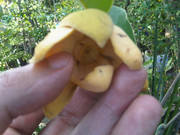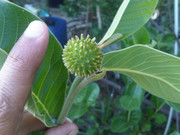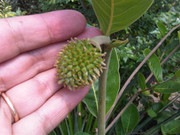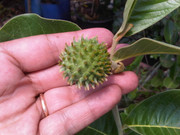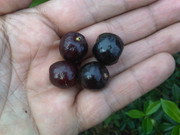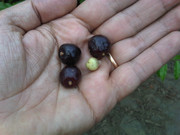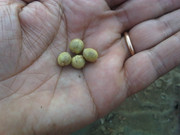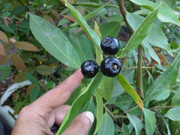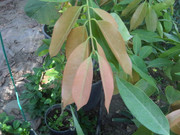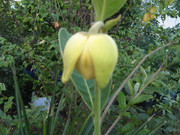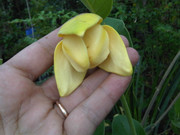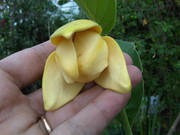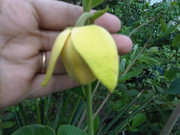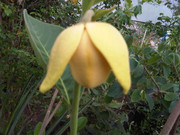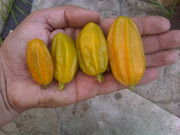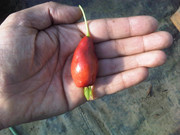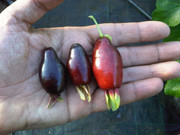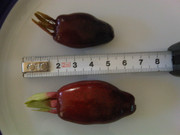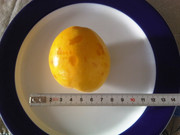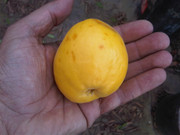351
Tropical Fruit Discussion / Does Eugenia stipitata (Araçá-boi) needs cross-pollination?
« on: September 23, 2013, 04:31:52 PM »
Hello all,
As a general rule I've always heard that all Eugenia species are self-fertile... this is one of those rules that I've found mentioned on forums like this but never really found it tested or discussed scientifically... like that current statement that "all cactus fruits are edible" that I keep considering true until someone convinces me otherwise (just hope not to find it too late !...)... but cross-pollination needs are well know for some members of the family mirtaceae being the Feijoas probably the most famous of all for this behavior...
So, after years of flowers and no fruits on my Eugenia stipitatas, I've found some references online saying this species had some degree of allogamy... I think this was the place where I've first read about it:
www.hort.purdue.edu/newcrop/1492/myrtaceae.html
I also remember to have discussed this subject with Berto before because apparently he had the same problem as I do, I mean, lots of flowers but zero fruit set... so as a last desperate attempt I placed two flowering plants of these side by side on my GH and spent sometime cross-hand-pollinating some flowers...
I lost track of the flowers I had pollinated by hand but this seems to have worked at last because recently I found the first 2 fruits ever for me... big and beautiful fruits and only in one of those plants that I coupled... all other plants continue without any fruits whatsoever despite being all of the same age and size... all plants were born from the same seed batch received from Brasil back in 2007 or 2008 so all my plants have 5 years of age at least...
Anyone else has evidences of this species needing cross-pollination to set fruits?... or it is just a question of age of the plant to start producing?
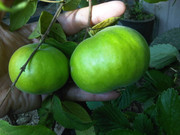
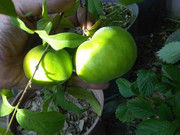
As a general rule I've always heard that all Eugenia species are self-fertile... this is one of those rules that I've found mentioned on forums like this but never really found it tested or discussed scientifically... like that current statement that "all cactus fruits are edible" that I keep considering true until someone convinces me otherwise (just hope not to find it too late !...)... but cross-pollination needs are well know for some members of the family mirtaceae being the Feijoas probably the most famous of all for this behavior...
So, after years of flowers and no fruits on my Eugenia stipitatas, I've found some references online saying this species had some degree of allogamy... I think this was the place where I've first read about it:
www.hort.purdue.edu/newcrop/1492/myrtaceae.html
I also remember to have discussed this subject with Berto before because apparently he had the same problem as I do, I mean, lots of flowers but zero fruit set... so as a last desperate attempt I placed two flowering plants of these side by side on my GH and spent sometime cross-hand-pollinating some flowers...
I lost track of the flowers I had pollinated by hand but this seems to have worked at last because recently I found the first 2 fruits ever for me... big and beautiful fruits and only in one of those plants that I coupled... all other plants continue without any fruits whatsoever despite being all of the same age and size... all plants were born from the same seed batch received from Brasil back in 2007 or 2008 so all my plants have 5 years of age at least...
Anyone else has evidences of this species needing cross-pollination to set fruits?... or it is just a question of age of the plant to start producing?



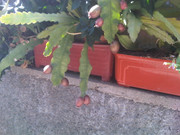
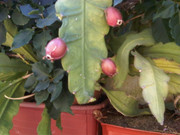
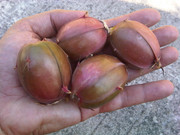
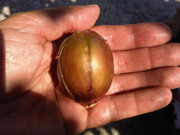
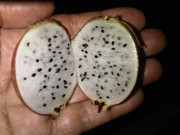
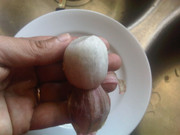
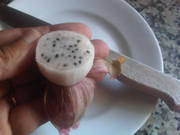
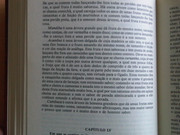



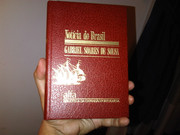
 !!!... hope it's not a crime!
!!!... hope it's not a crime!